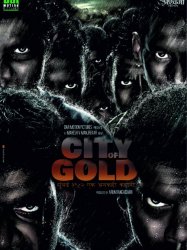Karan Patel is a Actor born on 23 november 1983

Karan Patel (born 23 November 1983) is an Indian television actor. Currently he is seen in Ekta Kapoor's Indian soap opera Yeh Hai Mohabbatein opposite Divyanka Tripathi. Karan Patel married Ankita Bhargava on 3 May 2015 in Mumbai.
Source : Wikidata
Karan Patel

- Infos
- Photos
- Best films
- Family
- Characters
- Awards
Birth 23 november 1983 (41 years)
Usually with
Filmography of Karan Patel (2 films)
Actor

Shootout at Wadala (2013)
, 2h30Directed by Sanjay Gupta
Origin Inde
Genres Drama, Biography, Action, Historical, Crime
Themes Gangster films
Actors John Abraham, Priyanka Chopra, Anil Kapoor, Kangana Ranaut, Tusshar Kapoor, Sonu Sood
Roles Jamal (Bhaskar's bodyguard)
Rating59%





In a police van, Afaaque Baaghran (Anil Kapoor) listens to the story narrated by a gangster Manya Surve (John Abraham) who is gravely injured with a bullet-riddled body. Manya Surve is powerful gangster who thinks he isn't a fool after a brawl with Dilawar.

City of Gold (2010)
Directed by Mahesh Manjrekar
Genres Drama, Crime
Themes Films based on plays
Actors Siddarth Jadhav, Sachin Khedekar, Seema Biswas, Ankush Chaudhari, Anusha Dandekar, Vineet Kumar
Roles Naru
Rating66%





The plot of the movie is based on the original script of Jayant Pawar, which highlights the consequences of the atrocities towards the mill workers, totally ignored by the Government. The film is a story of a family of mill workers in Mumbai. It traces the birth of the politics of greed in Mumbai and exposes the collusion between the triumvirate of big business, the political establishment and the trade union leaders who ostensibly were charged with protecting the rights of the mill workers. In the two decades that followed, the entire landscape of Central Bombay was changed forever. Land became the currency of growth, and this began the systematic extinction of mills in Bombay. In a matter of just a few years, hundreds of thousands of workers lost their means of livelihood. Having worked in these mills from generation to generation, this was the only vocation that they knew.
 Connection
Connection




